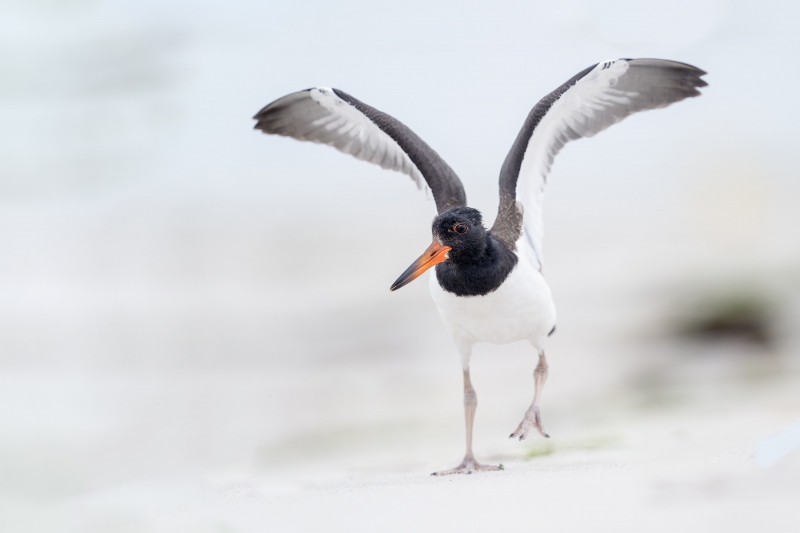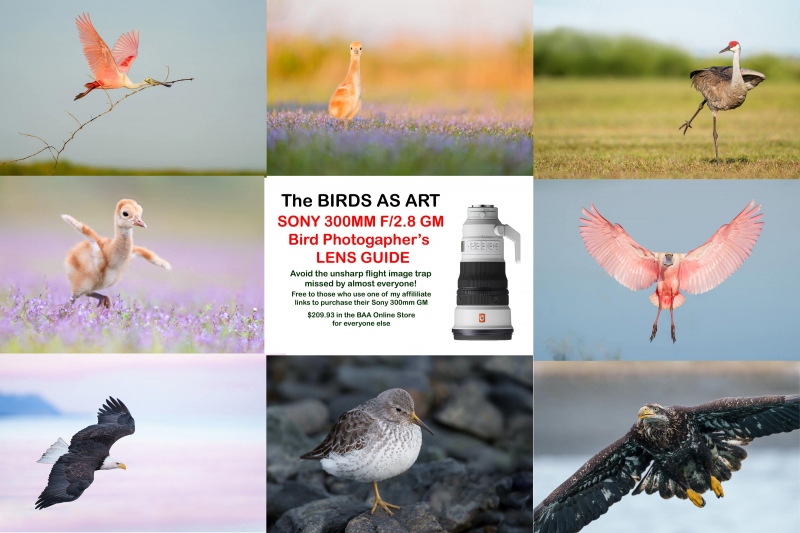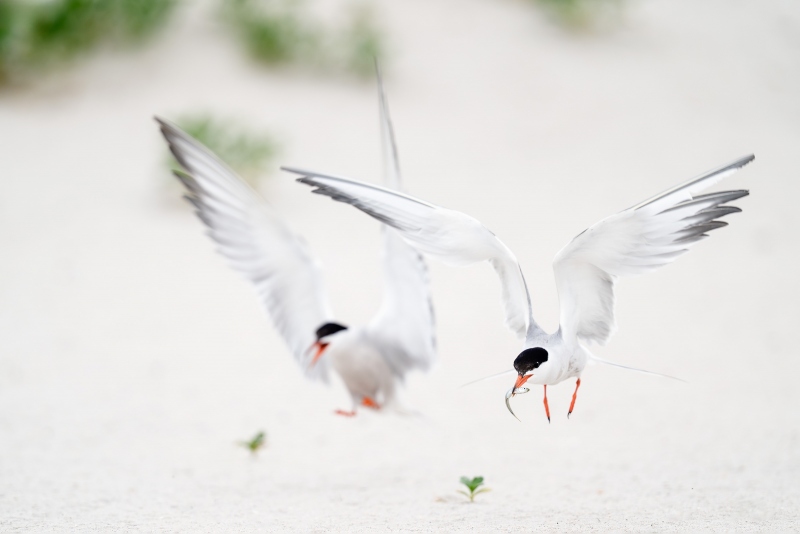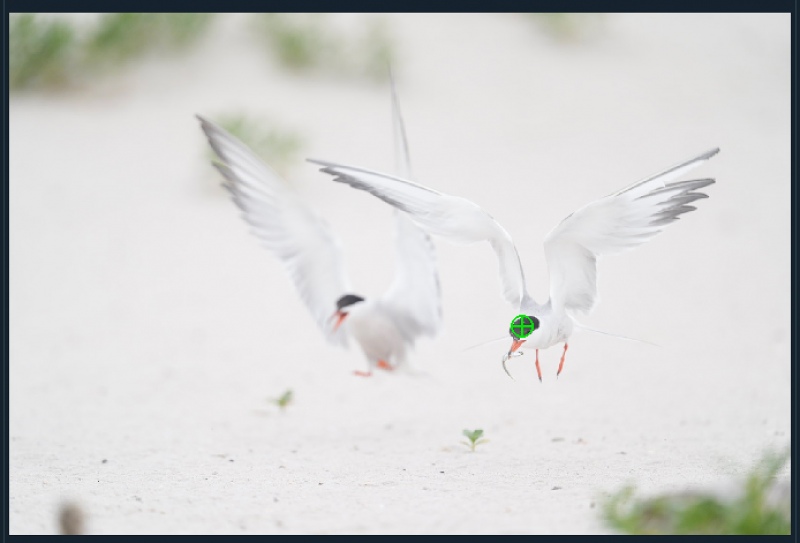What’s Up?
In this short YouTube video(12:05), I share the 64 keepers that I cherry picked from the 6206 images that I created in less than four hours at Nickerson Beach Park on Long Island on the morning of July 24, 2024. Watch to the end to learn the fine points of selecting your keepers and my optimization plans for many of the images. Note: editing the day folder took less than 20 minutes; I tagged only the very best and deleted several thousand sharp, perfectly exposed (but boring) flight shots of Common Terns.
I had taken the Auto Train to Lorton, VA late on Monday 22 July and made it to my AirBnB near Nickerson Beach the next day before 4pm. I headed to the beach early the next morning despite the threat of rain and the heavily overcast skies. Feeling a bit lazy, I grabbed only my Sony 300mm f/2.8 GM lens, an FE 1.4X TC, and the ridiculously amazing Sony a9 iii — 120 frames per second. I left the 600mm f/4, a 2X TC, and my tripod in my SUV.
As I was not expecting to do too well in the gloom on what turned out to be a 3 mile scouting walk, I opted not to take an extra battery or an additional Delkin 160GB. So much for planning. At 10:30am my card was full and the battery exhausted. So was I after having driven six hours on Tuesday.
Learn about joining me at Nickerson Beach this summer, or at Homer, AK for eagles in February 2025 by clicking here. There is just one spot left on the first Homer IPT.
|
|
|
This image was created on 24 July 2024 at Nickerson Beach Park, Lido Beach, NY. Seated on damp sand, I used the hand held Sony FE 300mm f/2.8 GM OSS lens (Sony E) with the Sony FE 1.4x Teleconverter and the ridiculously amazing Sony a9 III Mirrorless Camera. The exposure was determined using Zebra technology with ISO on the Thumb Dial. ISO 500. 1/1600 second at f4 (wide open) in Manual Mode. AWB at 8:42:41am on a solid overcast morning. RawDigger showed the raw file brightness to be perfect. Zone AF-C AF with Bird Face/Eye Detection performed perfectly. Be sure to click on the image to enjoy a high-res version. Image #1: American Oystercatcher juvenile stretching wings overhead (canvas added left and above) |
Exposing to the Right
As I’ve said here hundreds of times, properly exposed images made on dreary days should looked washed out bordering on over-exposed. So, be sure to expose to the right as I did with both of today’s featured images. You saw the raw files for each in the video above so you know what I am talking about. Learn to bring them back to life in the Digital Basics II PDF and in the Digital Basics III Video Series.
Left My 200-600 in Florida
Many folks are astonished to learn that I actually left the very versatile Sony 200-600 f/6.3 GM lens in Florida. On purpose? Why? Because of my faith in the Sony FE 300mm f/2.8 GM OSS lens (Sony E) (with or without either teleconverter). Though a bit less versatile because the 300 f/2.8 is not a zoom lens, I love the light weight and the hand hold-ability of the 300mm. In addition, when you work at f/4 with the 1.4X TC in place, you save 1 1/3 stops of light, super important on overcast days. Also, it acquires focus much faster than the 2-6, in part, because of its super-wide aperture.
It is easy to see why the 300mm f/2.8, 1.4X TC, a9 iii has quickly become my favorite hand held flight and action combo.
|
|
|
For those who did not use my link to purchase their Sony 300mm f/2.8 GM lens, you can order your a copy here for $209.93. Click on the image to enlarge and to be able to read the fine print. |
The BAA Sony 300mm f/2.8 Lens Guide
Impressed by my (or Pat’s) Sony FE 300mm f/2.8 GM OSS Lens (Sony E) images? Use either my Bedfords or B&H affiliate link to purchase your Sony 300mm f/2.8 GM lens and shoot me your receipt via e-mail and request a copy of the first-ever BAA Lens Guide. I thought that it would take only minutes to create this guide, but I was dead wrong. In the process of creating it, I learned a ton about the lens. And even better, I discovered a simple yet potentially fatal flaw that was resulting in sporadically unsharp flight images. The set-up fix is simple. Just be sure to use one of my affiliate links and get the guide for free.
If not, you can purchase a copy here for $209.93. Yes, it never hurts to use my links and it never costs you one penny more. And if you contact me via e-mail before you make a major purchase, I can often save you some money.
|
|
|
This image was created on 24 July 2024 at Nickerson Beach Park, Lido Beach, NY. Seated on damp sand, I used the hand held Sony FE 300mm f/2.8 GM OSS lens (Sony E) with the Sony FE 1.4x Teleconverter and the ridiculously amazing Sony a9 III Mirrorless Camera. The exposure was determined using Zebra technology with ISO on the Thumb Dial. ISO 500. 1/1600 second at f4 (wide open) in Manual Mode. AWB at 8:42:41am on a solid overcast morning. RawDigger showed the raw file brightness to be perfect. Zone AF-C AF with Bird Face/Eye Detection performed perfectly. Be sure to click on the image to enjoy a high-res version. Image #2: Common Terns — two adults landing, one with fish |
Astounding a9 iii Autofocus
Yes, the Sony a-1 images have slightly more than twice the megapixels (50MP as compared to 24MP) than the a9 iii. But when shooting action and flight, what good are more megapixels if the image is not razor sharp on the eye? No good at all. In addition, the a9 iii gives me more confidence when shooting fast-moving birds so inevitably, I get better results.
|
|
A7INFO screen capture for Image #2: Common Terns — two adults landing, one with fish |
What Can I Say?
Not much, as in this case a screen capture is worth 1000 words. Though the Sony a1 had the greatest AF system that I ever used, it is simply not as consistently good at Bird Face-Eye tracking as the a9 iii.
Note also the washed out look of the raw file.
Typos
With all blog posts, feel free to e-mail or to leave a comment regarding any typos or errors.


















Leave a Reply